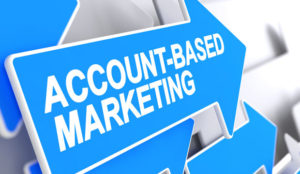Four Quadrant this week released its Marketing Automation Buyer’s Checklist for companies seeking to purchase a B2B marketing automation platform, or MAP.
The checklist has eight major categories for evaluation and more than 35 subcategories. It lists more than 100 questions buyers should ask to make an informed assessment of MAP vendors’ offerings.
The checklist covers expected business outcomes from MAPs, who and what the MAP should support, the integration capabilities the MAP should have, and what APIs the MAP should offer out of the box.
The checklist also covers the following must-have MAP capabilities:
- Demand generation and account-based marketing
- Personalization
- SEO/SEM
- E-commerce
- Social media
- UI/UX
- Reporting
- Analytics
The MAP checklist lets businesses establish a predictable model that documents the following:
- Each stage of the parking and sales funnel
- Lead sources
- Quantities and values at each state
- Movement between stages
- Velocity of movement between stages
- Contribution of marketing at each stage in the sales cycle
Companies of any size can use the checklist, because they “all have the same problem,” said Peter Buscemi, founder of Four Quadrant.
“The only difference is scale,” he told CRM Buyer. “There is at least one person in any organization performing some or all of these tasks, but usually not efficiently, effectively or in a scalable manner.”
Breaking It Down
The section on who and what the MAP supports has more than 20 questions to ensure the user purchases the right solution.
The must-have capabilities section has more than 15 questions; the social media capabilities section has more than 10; the UI/UX capabilities section lists eight; the reporting capabilities section and the must-have analytics sections each have more than 10 questions; and there are 15 questions in the must-have integration and API capabilities section.
The Lure of MAPs
Fifty-one percent of all companies that participated in an Emailmondaysurvey indicated they were using marketing automation, and 58 percent of B2B companies planned to adopt the technology, Buscemi pointed out.
MAPs automate manual tasks and minimize human error around content creation, management and personalization, campaign scheduling and execution, data hygiene, and communication with sales.
They combine multiple criteria, helping enterprises gain a multichannel view of prospects.
They also help align sales and marketing efforts, which long has been an issue in enterprises.
Lay the Groundwork First
“Any size organization [must] have an integrated sales and marketing plan,” Buscemi said. They must understand the process of creating leads and converting them to customers before investing in a MAP.
“Sometimes marketing owns the sales process — in e-commerce situations — and sometimes sales is performed by inside or field sales people,” Buscemi explained. “In either scenario, there’s no reason for marketing to generate a lead unless there’s a high probability that the lead will result in a customer.”
Once that process is understood, a company can invest in a MAP to reduce human error, to scale, and to build a sales pipeline that converts to revenue.
“A bottom-up approach focused on functionality misses a more important step for all size businesses: What’s the business goal?” said Rebecca Wettemann, VP of research at Nucleus Research.
“Companies should start with the business case and then look at what technologies they need,” she told CRM Buyer.
Competition and the growth of cloud and freemium solutions “enables even SMBs to make small marketing investments and get ROI,” Wettemann said.
Nucleus is “seeing a lot of pilot projects at large firms that help marketers test the impact their projects have on revenue before making a big commitment,” she noted.
Data silos continue to be “one of the biggest challenges marketers face today,” Wettemann added, “so keeping the big picture and integration in mind is important.”

























































